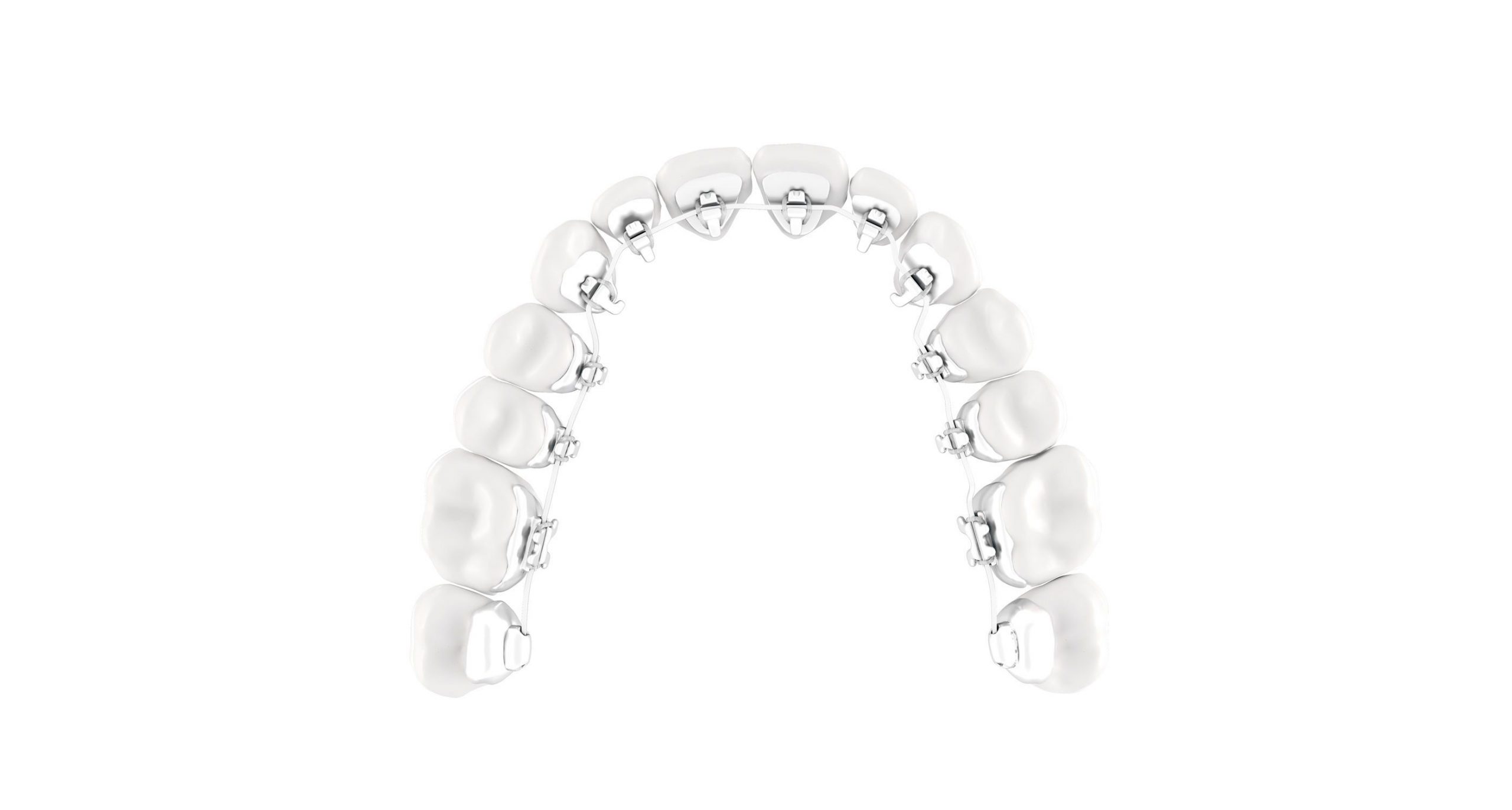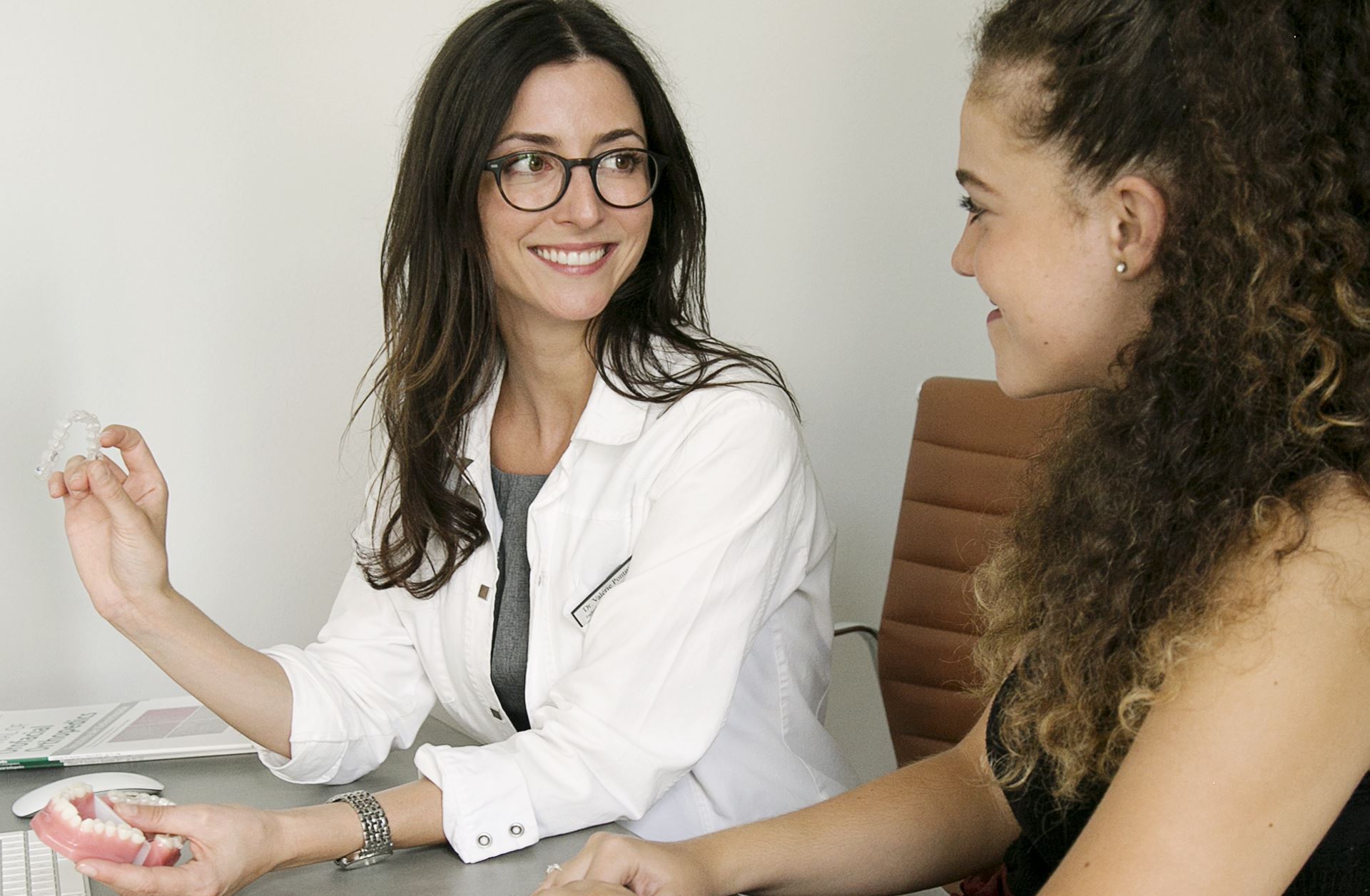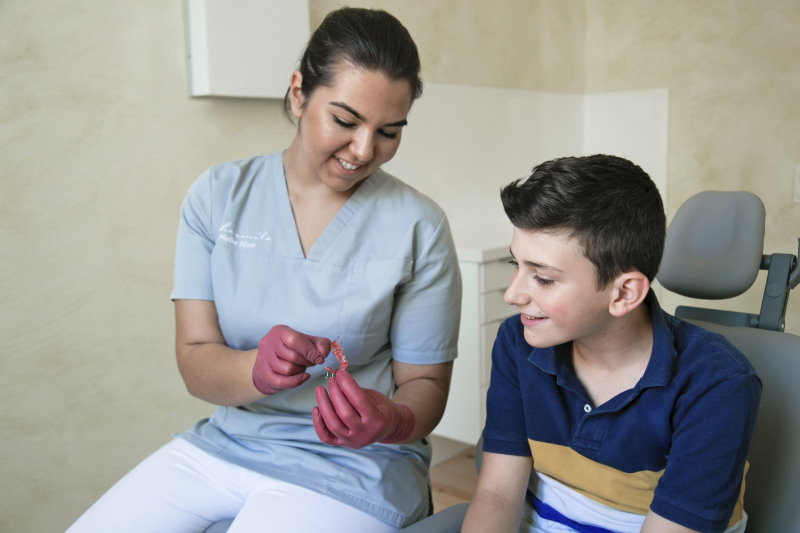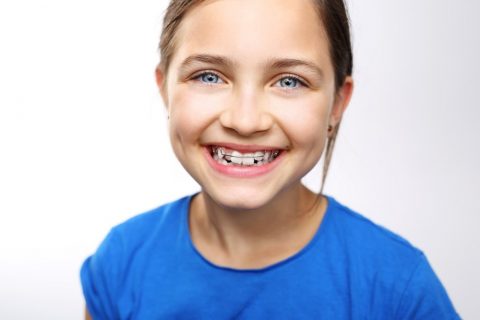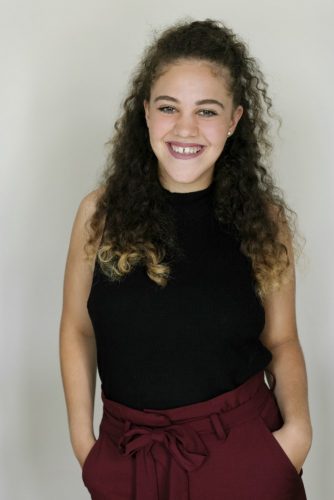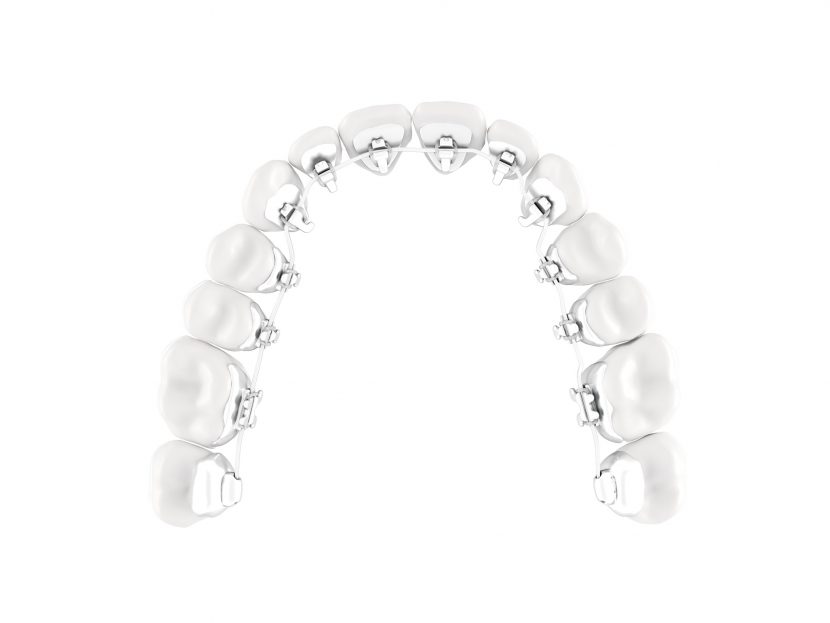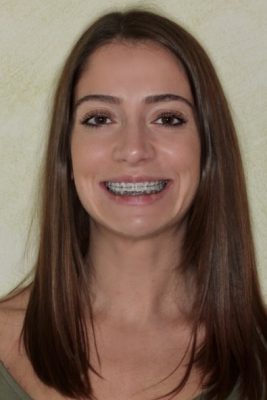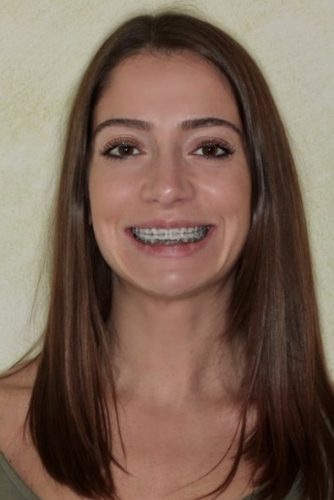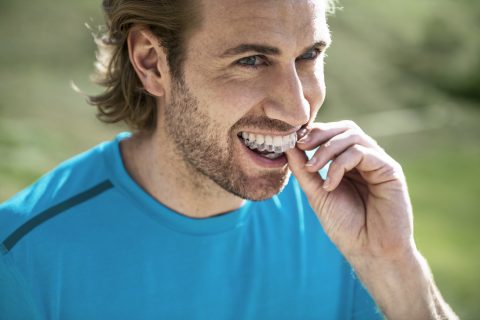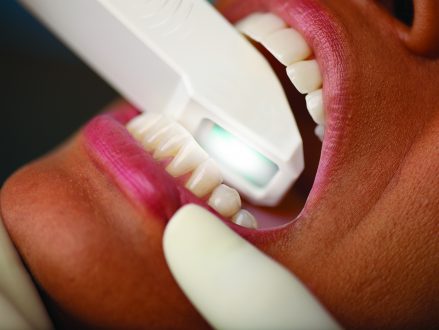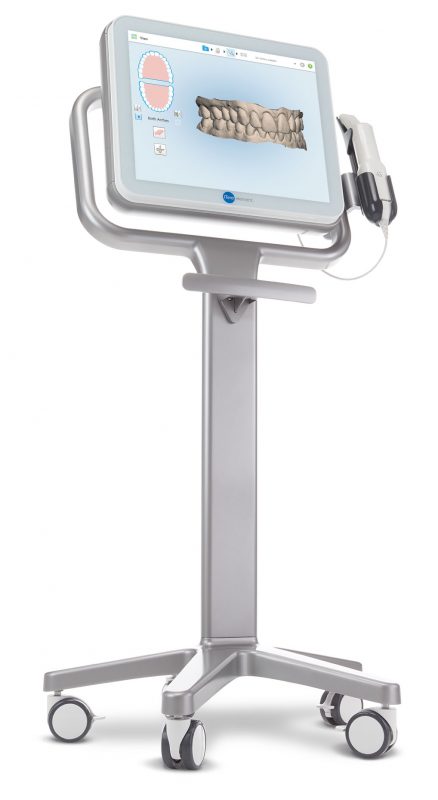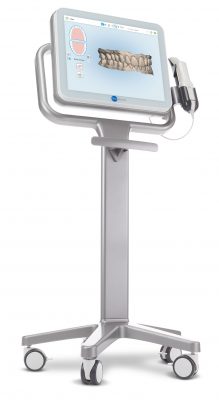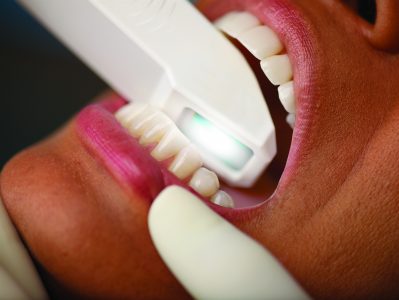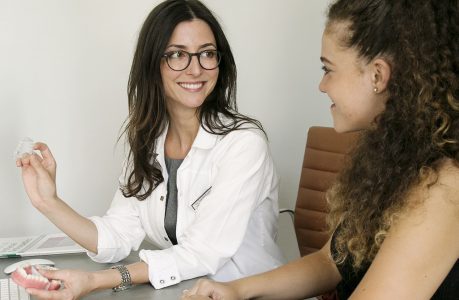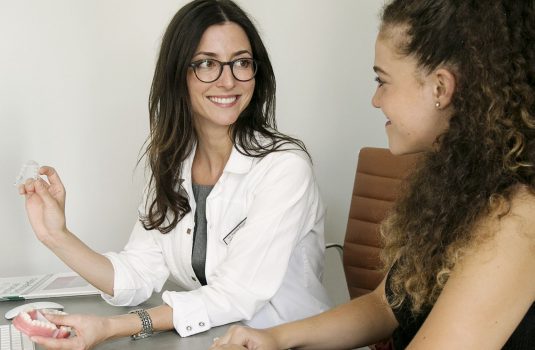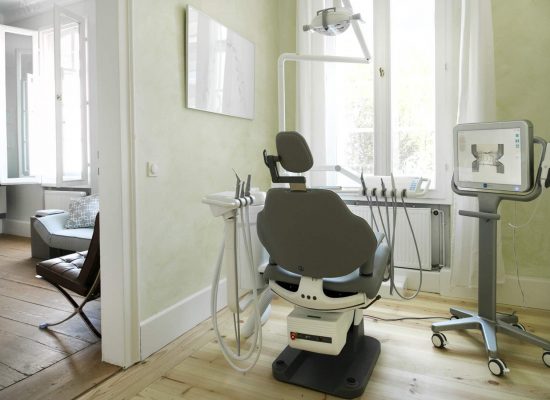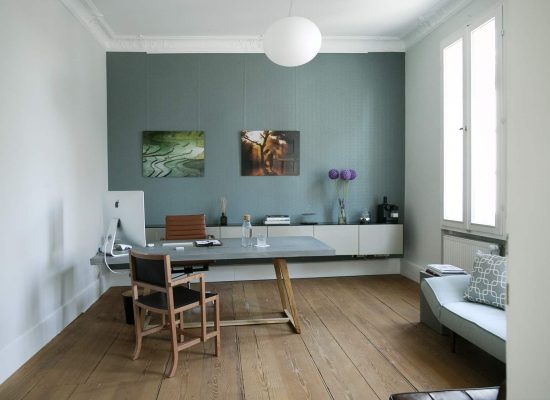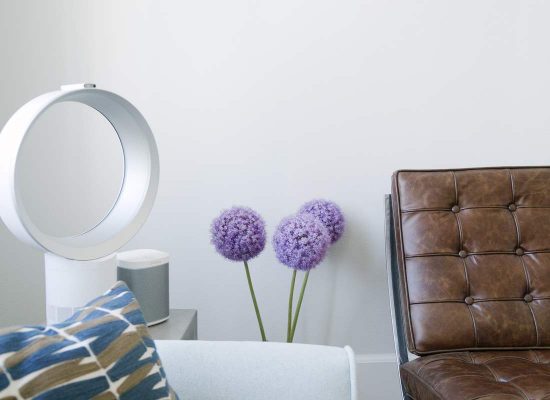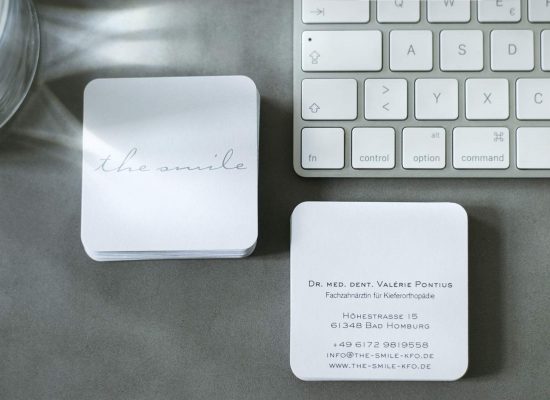Dr. Valerie Pontius
Orthodontist
Dear patients,
welcome to the Smile! I founded my practice in 2016 in order to offer my patients highly individualized orthodontic treatment. Times are changing rapidly in the orthodontic world! Digital diagnostics, work flow and treatment planning, fully customized less visible appliances, fewer extractions and state of the art treatment is what you will find in our practice. Since an orthodontic treatment takes months to years, our main concern is that you feel at home here.
Let us put a smile on your face!
Dr. Valérie Pontius
Member of the
• European Orthodontic Society (EOS)
• German Society for Orthodontics (DGKFO)
• German Board of Orthodontics (GBO)
• Kieferorthopädische Interessensgemeinschaft (KFO IG)
• German Doctors Association of Applied Kinesiology (DÄGAK)
2016 Opening of the smile, Bad Homburg
2016-2018 Orthodontist at private practice Toralf Gertzen, Wolfsburg
2016 Certified Orthodontist
2015-2016 Orthodontic resident at Hannover Medical School, Prof. Dr. Schwestka-Polly (Germany’s leading university for completely customized lingual appliances and the only internationally accredited orthodontic program in Germany according to NEBEOP guidelines/ NEBEOP full member)
2013-2015 Orthodontic resident in private practice Dr. Schneidereit and Dr. Siekmann, Bielefeld (emphasis on lingual orthodontics, Invisalign, functional appliances, CMD treatment, applied kinesiology)
2013 Publication “Retrospective evaluation of perforation repairs in 6 private practices“, Journal of Endodontics
2012 Doctoral dissertation “Retrospective evaluation of perforation repairs in 6 private practices“, Philipps University Marburg, Prof. Dr. Frankenberger, magna cum laude
2010-2012 General dentistry in private practice, Berlin
2005-2010 Philipps University, Marburg dental school, graduated magna cum laude
1996-2005 Kaiserin-Friedrich-Gymnasium, Bad Homburg, Abitur
1992-1996 Frankfurt International School, Oberursel
in Bad Homburg auf jameda
Our team


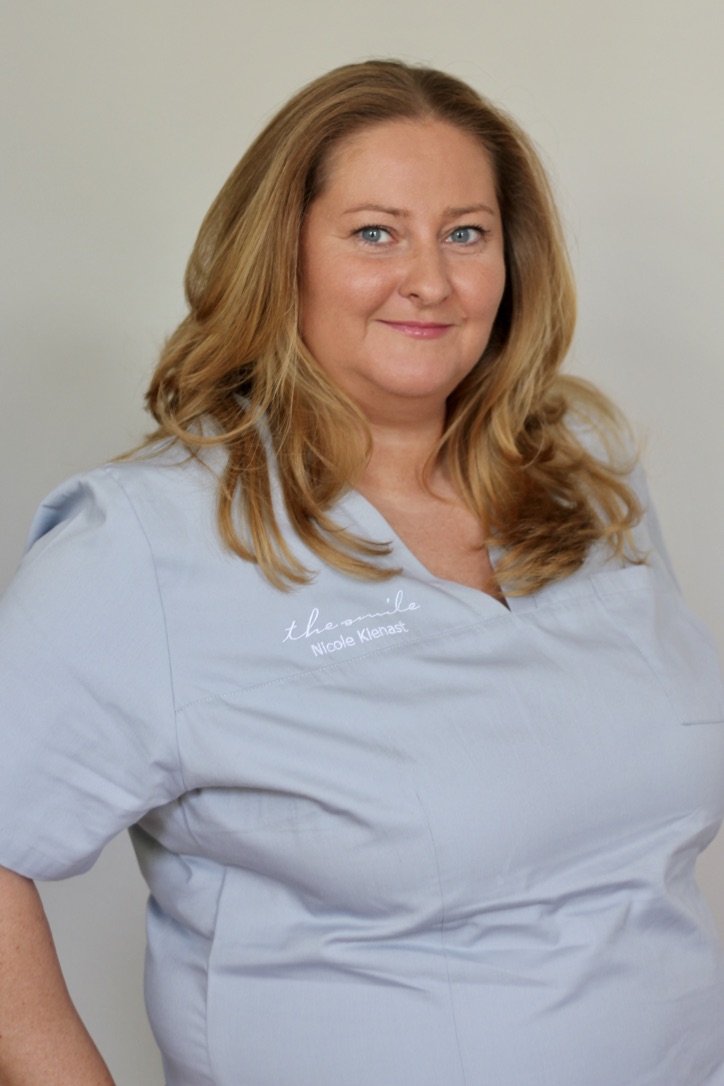
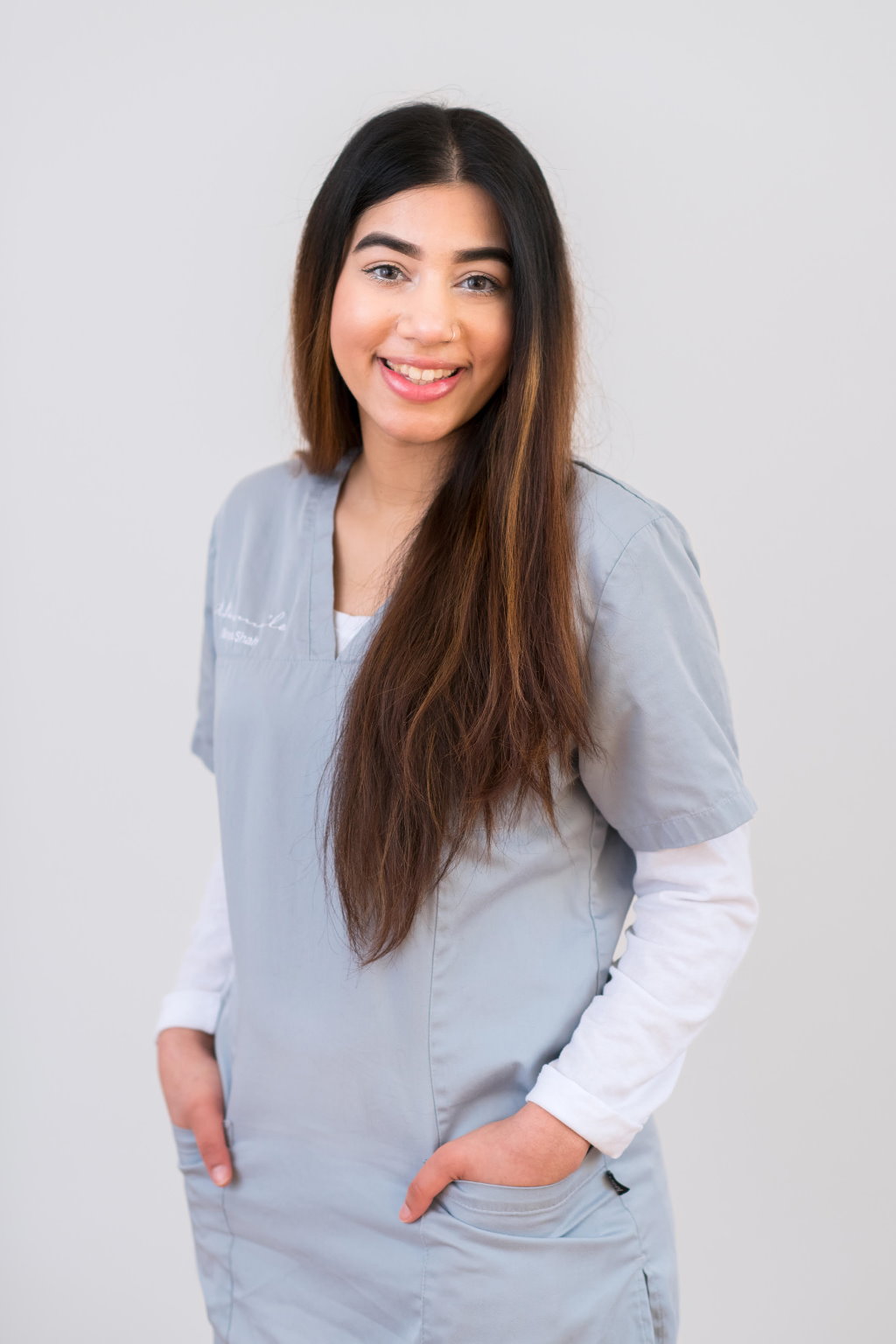
Treatment
Orthodontics for Kids and Teens
Early treatment is a short orthodontic intervention to prevent asymmetrical growth or longer orthodontic treatment later in life. Our youngest patients are five years old.
Main orthodontic treatment usually begins in the late phase of the mixed dentition, using the puberal growth spurt and excess space that deciduous teeth provide (leeway space). This phase mainly occurs in 9-12 year olds, but you are never too old for treatment.
Orthodontics for Kids and Teens
Early treatment is a short orthodontic intervention to prevent asymmetrical growth or longer orthodontic treatment later in life. Our youngest patients are five years old.
Main orthodontic treatment usually begins in the late phase of the mixed dentition, using the puberal growth spurt and excess space that deciduous teeth provide (leeway space). This phase mainly occurs in 9-12 year olds, but you are never too old for treatment.
Removable appliances
Handmade in our own laboratory, we use functional removable appliances to help with our patients‘ growth. With compliance, the facial profile can be harmonized. The temporo-mandibular joints (TMJ) are the most complex joints in our body! They work as a pair, gliding and rotating together while we open and close. Disharmony can lead to stress in the joints, causing pain (CMD/ cranio-mandibular dysfunction) and even scoliosis resulting in orthopedic problems. Harmonizing growth and joint position can therefore greatly benefit body posture. Additionally, habits such as tongue thrusting can be treated, usually involving logopedic treatment. While your child is going through orthodontic treatment with removable appliances, we optimize their oral hygiene in preparation for a following short intervention with fixed appliances or Invisalign.
Removable appliances
Handmade in our own laboratory, we use functional removable appliances to help with our patients‘ growth. With compliance, the facial profile can be harmonized. The temporo-mandibular joints (TMJ) are the most complex joints in our body! They work as a pair, gliding and rotating together while we open and close. Disharmony can lead to stress in the joints, causing pain (CMD/ cranio-mandibular dysfunction) and even scoliosis resulting in orthopedic problems. Harmonizing growth and joint position can therefore greatly benefit body posture. Additionally, habits such as tongue thrusting can be treated, usually involving logopedic treatment. While your child is going through orthodontic treatment with removable appliances, we optimize their oral hygiene in preparation for a following short intervention with fixed appliances or Invisalign.
Rapid maxillary expansion (RME)
To treat large width discrepancies between upper and lower arches, we use a rapid maxillary expander (RME). It can widen the skeletal base of the upper jaw in kids and adults. A narrow upper jaw can lead to a retrognathic lower jaw (backward chin position), posterior crossbites and facial asymmetries. The rapid maxillary expander is anchored on teeth or miniscrews. After rapid expansion (within weeks) it remains in the patient‘s mouth passively for six months to stabilize the achieved width.
A RME is a fixed appliance placed in the palate. Therefore it is not noticeable by others. A further benefit is the associated widening of the nasal cavity leading to better respiratory function. Treatment with a RME is usually followed by a phase of removable or fixed appliances.
Rapid maxillary expansion (RME)
To treat large width discrepancies between upper and lower arches, we use a rapid maxillary expander (RME). It can widen the skeletal base of the upper jaw in kids and adults. A narrow upper jaw can lead to a retrognathic lower jaw (backward chin position), posterior crossbites and facial asymmetries. The rapid maxillary expander is anchored on teeth or miniscrews. After rapid expansion (within weeks) it remains in the patient‘s mouth passively for six months to stabilize the achieved width.
A RME is a fixed appliance placed in the palate. Therefore it is not noticeable by others. A further benefit is the associated widening of the nasal cavity leading to better respiratory function. Treatment with a RME is usually followed by a phase of removable or fixed appliances.
Adult Orthodontics
Teeth can be moved at any age.
We usually treat adults with lingual fixed braces or invisalign. This makes your orthodontic experience as comfortable and invisible as possible while providing ultra precise results.
Before treatment, your dentist should check for any signs of periodontal disease or cavities.
Adult Orthodontics
Teeth can be moved at any age.
We usually treat adults with lingual fixed braces or invisalign. This makes your orthodontic experience as comfortable and invisible as possible while providing ultra precise results.
Before treatment, your dentist should check for any signs of periodontal disease or cavities.
Lingual Orthodontics
The completely customized lingual appliance is absolutely invisible to others. It is the most precise technology to align teeth. Brackets which are individualized for each patient in a German high tech laboratory are bonded to the lingual tooth surface (the surface of the tooth facing your mouth). The arch wires placed into the bracket slots are bent by robots in three dimensions according to a set up determining the final tooth position. You will be able to see treatment results in models even before bracket placement.
Your teeth are moved carefully to their planned position. The risk of enamel decalcification (white spot lesions), which is the main concern adolescents have during treatment, is reduced by ten-fold compared to the regular fixed appliance (1,2).
You will notice the alignment of your front teeth within weeks, faster than with any other method.
(1) Knösel, M., Klang, E., Helms, H. J., & Wiechmann, D. (2016). Occurrence and severity of enamel decalcification adjacent to bracket bases and sub-bracket lesions during orthodontic treatment with two different lingual appliances. European Journal of Orthodontics, 38(5), 485–492. (2) Wiechmann, D., Klang, E., Helms, H. J., & Knösel, M. (2015). Lingual appliances reduce the incidence of white spot lesions during orthodontic multibracket treatment. American Journal of Orthodontics and Dentofacial Orthopedics, 148(3), 414–422.
Lingual Orthodontics
The completely customized lingual appliance is absolutely invisible to others. It is the most precise technology to align teeth. Brackets which are individualized for each patient in a German high tech laboratory are bonded to the lingual tooth surface (the surface of the tooth facing your mouth). The arch wires placed into the bracket slots are bent by robots in three dimensions according to a set up determining the final tooth position. You will be able to see treatment results in models even before bracket placement.
Your teeth are moved carefully to their planned position. The risk of enamel decalcification (white spot lesions), which is the main concern adolescents have during treatment, is reduced by ten-fold compared to the regular fixed appliance (1,2).
You will notice the alignment of your front teeth within weeks, faster than with any other method.
(1) Knösel, M., Klang, E., Helms, H. J., & Wiechmann, D. (2016). Occurrence and severity of enamel decalcification adjacent to bracket bases and sub-bracket lesions during orthodontic treatment with two different lingual appliances. European Journal of Orthodontics, 38(5), 485–492. (2) Wiechmann, D., Klang, E., Helms, H. J., & Knösel, M. (2015). Lingual appliances reduce the incidence of white spot lesions during orthodontic multibracket treatment. American Journal of Orthodontics and Dentofacial Orthopedics, 148(3), 414–422.
Self Ligating Brackets
Most adolescents choose self ligating brackets for orthodontic treatment. They are smaller than regular brackets, offering more comfort. The bracket’s clip is intelligent – it releases the arch wire if forces are too high, reducing discomfort. Teeth are moved in the right direction carefully, but efficiently. Because of the easy opening clip, appointments are shorter compared to appointments with regular bracket appliances. Elastic ligatures can be avoided, leading to better oral hygiene and less friction (accelerated tooth movement). For more esthetic treatment, we also offer ceramic (tooth-colored) self ligating brackets.
Self Ligating Brackets
Most adolescents choose self ligating brackets for orthodontic treatment. They are smaller than regular brackets, offering more comfort. The bracket’s clip is intelligent – it releases the arch wire if forces are too high, reducing discomfort. Teeth are moved in the right direction carefully, but efficiently. Because of the easy opening clip, appointments are shorter compared to appointments with regular bracket appliances. Elastic ligatures can be avoided, leading to better oral hygiene and less friction (accelerated tooth movement). For more esthetic treatment, we also offer ceramic (tooth-colored) self ligating brackets.
Invisalign and the Invisalign logo, among others, are trademarks of Align Technology, Inc., and are registered in the U.S. and other countries.
Invisalign
After digital treatment planning, clear aligners are customized to gently move your teeth to their optimal position. The aligners can be easily removed for meals and cleaning, so that there is no elevated risk of cavities. Every 1-2 weeks, the aligners are replaced. Because we often bond transparent composite attachments to your teeth for precise alignment, this method is almost invisible and a great solution for smaller misalignments or re-treatments. Appointments are spaced further apart. As a patient you are only required to come in about every two to three months, giving you full flexibility to work and travel while undergoing orthodontic treatment. Because there is no need for wires or brackets with Invisalign, you don’t need to be concerned about any breakages, poking wires or other problems which you might associate with fixed appliances. Invisalign is a pain free experience, allowing you to eat and keep smiling without restrictions. Orthodontic treatment should be stress free. Ask us if you qualify for Invisalign treatment.
Invisalign
After digital treatment planning, clear aligners are customized to gently move your teeth to their optimal position. The aligners can be easily removed for meals and cleaning, so that there is no elevated risk of cavities. Every 1-2 weeks, the aligners are replaced. Because we often bond transparent composite attachments to your teeth for precise alignment, this method is almost invisible and a great solution for smaller misalignments or re-treatments. Appointments are spaced further apart. As a patient you are only required to come in about every two to three months, giving you full flexibility to work and travel while undergoing orthodontic treatment. Because there is no need for wires or brackets with Invisalign, you don’t need to be concerned about any breakages, poking wires or other problems which you might associate with fixed appliances. Invisalign is a pain free experience, allowing you to eat and keep smiling without restrictions. Orthodontic treatment should be stress free. Ask us if you qualify for Invisalign treatment.
Invisalign and the Invisalign logo, among others, are trademarks of Align Technology, Inc., and are registered in the U.S. and other countries.
Dental impressions?! A thing of the past!
Thanks to our brand new intraoral scanner iTero element we avoid taking dental impressions whenever possible.
A small camera takes about 60 pictures per second which are combined to form a high precision 3D cast of your teeth. Scanning upper and lower jaws takes about three minutes. In contrast to regular dental impressions with silicone or alginate, this is a technique that doesn’t cause you any discomfort.
Thanks to our scanner’s high precision, we are able to diagnose, plan and manufacture orthodontic appliances completely impression-free!
Dental impressions?! A thing of the past!
Thanks to our brand new intraoral scanner iTero element we avoid taking dental impressions whenever possible.
A small camera takes about 60 pictures per second which are combined to form a high precision 3D cast of your teeth. Scanning upper and lower jaws takes about three minutes. In contrast to regular dental impressions with silicone or alginate, this is a technique that doesn’t cause you any discomfort.
Thanks to our scanner’s high precision, we are able to diagnose, plan and manufacture orthodontic appliances completely impression-free!
What are the costs of orthodontic treatment?
Costs for orthodontic treatment can vary greatly. Factors influencing the price are the severity of your malocclusion, treatment duration and which orthodontic appliances are used. We can give you a rough estimate of cost during your primary consultation. After diagnostics and careful planning, you will receive an exact budget according to your individual needs.
What are the costs of orthodontic treatment?
Costs for orthodontic treatment can vary greatly. Factors influencing the price are the severity of your malocclusion, treatment duration and which orthodontic appliances are used. We can give you a rough estimate of cost during your primary consultation. After diagnostics and careful planning, you will receive an exact budget according to your individual needs.
Is orthodontic treatment covered by my health insurance policy?
That depends on the severity of your malocclusion (your orthodontic needs).
If you are a minor, orthodontic treatment of severe malocclusions is usually covered by the German public health insurance (GKV) with standard braces. We will inform you if you qualify during your first consultation (which is always covered by your public health care).
In private health insurances, coverage for orthodontic treatment varies and depends on your individual health care contract. Ask your health care provider. After diagnostics and planning, you will receive a detailed estimate which you can send to your insurance company. That way you know exactly what is covered before you start treatment.
Is orthodontic treatment covered by my health insurance policy?
That depends on the severity of your malocclusion (your orthodontic needs).
If you are a minor, orthodontic treatment of severe malocclusions is usually covered by the German public health insurance (GKV) with standard braces. We will inform you if you qualify during your first consultation (which is always covered by your public health care).
In private health insurances, coverage for orthodontic treatment varies and depends on your individual health care contract. Ask your health care provider. After diagnostics and planning, you will receive a detailed estimate which you can send to your insurance company. That way you know exactly what is covered before you start treatment.
Contact Us
Dr. med. dent. Valérie Pontius
Höhestraße 15
61348 Bad Homburg
+49 6172 9819558
info@the-smile-kfo.de



